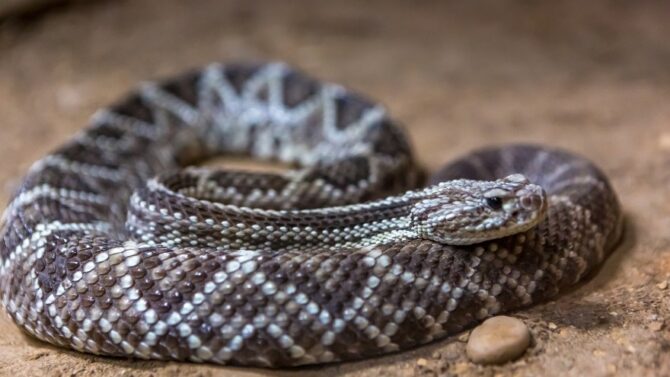Montana is the fourth largest state in the United States with unrivaled natural beauty. It’s a great place to go hiking, canoeing, hunting, and camping.
That state is known for its diverse wildlife, and if you’ve ever wondered if there are any dangerous animals in the state, you should keep reading.
Some of the most dangerous animals in Montana that are borderline deadly are rattlesnakes, grizzly bears, bobcats, wolverines, snakes, and others.
This article will teach you everything you need to know about the ten deadliest animals in Montana and wildlife safety tips.
The Most Dangerous Animals In Montana That Could Kill You
Because a large part of Montana is lightly populated, a sizable portion of the state is natural, and wildlife and many plant species flourish there.
In Montana, more than 200 animal species range from smaller rodents and rabbits to larger predators. Some of these animals are dangerous, so you should always exercise caution.
Here are 10 extremely dangerous animals you would find in Montana:
1. American Black Bear
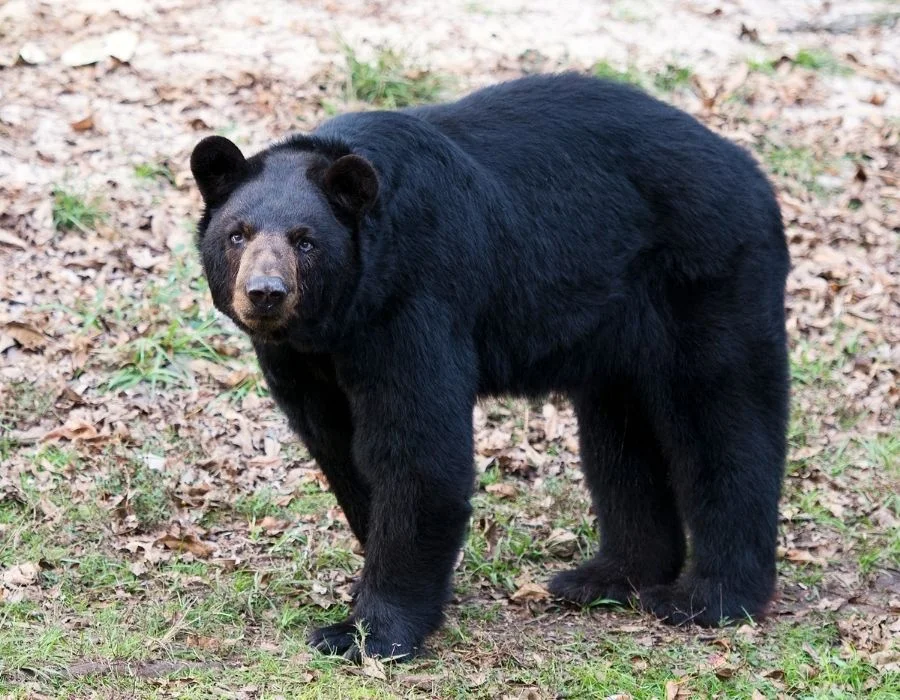
- Habitat: Forests, mountains
- Classification: Mammal
- Diet: Omnivore
- Scientific name: Ursus americanus
Black bears are medium-sized bears. Although they are the smallest bear species in North America, they are also deadly.
On his show, the Colbert Report, Stephen Colbert said, “All bears are Satan’s offspring, his servants, and the true embodiment of evil. They are soulless beings.”
This is funny, but it’s also the truth. Keep your distance from the young of these wild animals because mother bears have been known to attack humans if they feel threatened or if someone gets too close to her cubs.
Furthermore, you don’t want to obstruct a bear presumably on the prowl in search of food. The risk is great.
2. Grizzly Bear

- Habitat: Woodlands, mountains, forests, prairies, alpine meadows, etc.
- Classification: Mammal
- Diet: Omnivore
- Scientific name: Ursus arctos horribilis
A subspecies of the brown bear that lives in North America is the grizzly bear (Ursus arctos horribilis), commonly referred to as the North American brown bear or simply the grizzly. Grizzly bears can be seen in large numbers throughout Montana.
Black bears are considered less violent than grizzlies while protecting their young. A hump and short, rounded ears help identify grizzly bears from black bears.
The position of its rump can also distinguish it compared to its shoulders, which are lower than that of a black bear.
Grizzly bears typically stay away from humans despite having a clear physical edge.
The majority of grizzly bear attacks (about 70% of them) result from a bear being startled at close range, especially if it has food to defend or mother grizzlies defending their young.
News sources claim that a grizzly bear murdered a woman after approaching her encampment. There have been numerous reports of grizzlies-caused death in the state, including this one.
Grizzlies are undoubtedly not prepared to develop interpersonal relationships with people. If you encounter one, make a call for assistance or arrange to leave the area.
3. Hard Ticks
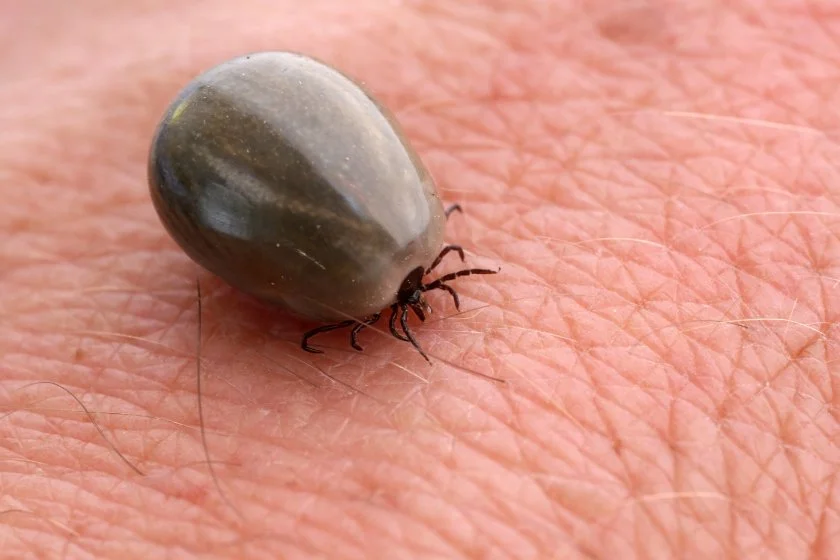
- Habitat: Woods, forests, moist and shady areas
- Classification: Arachnid
- Diet: Blood-feeding parasite/Sanguivore
- Scientific name: Ixodida
Montana’s two most prevalent ticks are the American dog tick and the Rocky Mountain wood tick. The ticks in Montana can still be deadly even though they do not spread Lyme disease.1
They can result in kidney failure, and shock, and—if not treated promptly with the appropriate antibiotic—can even result in death.
These ticks can transmit severe diseases, including Relapsing fever and Rocky Mountain spotted fever (RMSF), through their bites.
60,000 cases of tick-borne illness were reported in the state in 2017, and specialists advise individuals planning to spend time outside to take care to avoid being bitten.2
Some steps to prevent being bitten by these little parasites include avoiding tick-infested regions, applying bug repellent, and dressing in long sleeves and long pants.
4. Tomguito (the inland floodwater mosquito)
- Habitat: Rivers, floodwater, lakes, swamps
- Classification: Insect
- Diet: Blood-feeding parasite/Sanguivore
- Scientific name: Aedes vexans
The Tomguito mosquito, also known as the inland floodwater mosquito (Aedes vexans), is a widespread pest mosquito.
A. vexans mosquitoes are the most common ones in Montana. It is a blood-sucking insect that attacks humans aggressively.
It is a known carrier of several illnesses that affect people in Europe, giving rise to a 2-day fever that can later lead to encephalitis or meningitis.
Numerous arboviruses, including the Zika virus, Rift valley fever virus, West Nile virus, etc., are frequently spread by the tomguito.3
The A. vexans mosquito also distributes yellow fever, dengue, and other diseases harmful to humans.
5. Bobcat
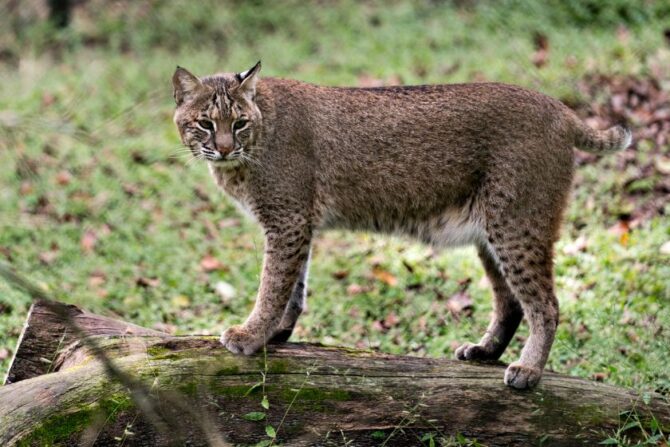
- Habitat: Forests, swamps, semi-deserts, scrublands, grasslands, savannas
- Classification: Mammal
- Diet: Carnivore
- Scientific name: Lynx rufus
The medium-sized bobcat (Lynx rufus), commonly referred to as the red lynx, is a native of North America.
They like to make their dens in caves, between rocks, inside hollow logs, or even in abandoned mine shafts. In Montana, particularly in the western regions, you might run into a bobcat almost anywhere.
The bobcat gets its name from the characteristic black bars on its forelegs and the short, black-tipped tail that bobbed. It can grow up to 125 cm long in total (tail included).
It is a predator that can live in various habitats, including swamplands, semideserts, urban edges, and forests.
The Lynx rufus makes an effective predator because of its keen hearing, vision, and sense of smell.
Although they prefer to prey on smaller animals over humans, bobcats are deadly huge wild cats that will attack humans if they feel like it.
The bobcat poses no serious threat to people when left alone and unprovoked. It may occasionally attack if it feels threatened or when it becomes enraged.
Ensure that you are not luring bobcats or other predators into your yard by taking extra precautions.
6. Rattlesnake

- Habitat: Arid deserts, dunes, forests, swamps, grasslands, marshes, meadows, plains, mountains
- Classification: Reptile
- Diet: Carnivore
- Scientific name: Crotalus
Although there are ten different types of snakes in Montana, only the Western rattlesnake has deadly venom.
Although it is unlikely that a rattlesnake may bite you while traveling in Montana, you should still be informed of the risks to keep safe.
Approximately 16 individuals are bitten by rattlesnakes yearly in Montana since these snakes are venomous and are most likely to result in death.4
Learn to identify rattlesnake sounds to protect yourself from them while in the state. You should also avoid approaching any snakes you encounter in the wild because you can’t be sure which ones are safe to approach.
7. Black Widow Spider

- Habitat: Small trees, holes, woodpiles, cluttered and dark areas, forests, deserts
- Classification: Arachnid
- Diet: Carnivores
- Scientific name: Latrodectus mactans
The infamous black widow spider can be recognized by the colorful, hourglass-shaped mark on its abdomen.
The female black widows are famous for their striking black and red appearance and the fact that occasionally they may consume their partners after mating. Native to North America, these spider species are widespread in Montana.
Since the venom from this spider is said to be 15 times stronger than that of a rattlesnake, its bite is one of the most feared.
Contrary to popular belief, most people, especially those who are healthy and get bitten, do not suffer any serious harm—let alone death.
In humans, the black widow’s bites cause muscle aches, nausea, and paralysis of the diaphragm, making breathing difficult. However, bites have the potential to be fatal—usually to young children, the old, or the weak.
Because the spiders are nonaggressive and only bite in self-defense, as when someone accidentally sits on them, fatalities are fortunately rather uncommon.
Although these spiders are naturally not hostile, they won’t hesitate to attack anyone approaching them or provoking them.
The very poisonous venom of black widow spiders causes latrodectism. Never be reluctant to see a doctor if you are ever bitten by one.5
8. Wolverines
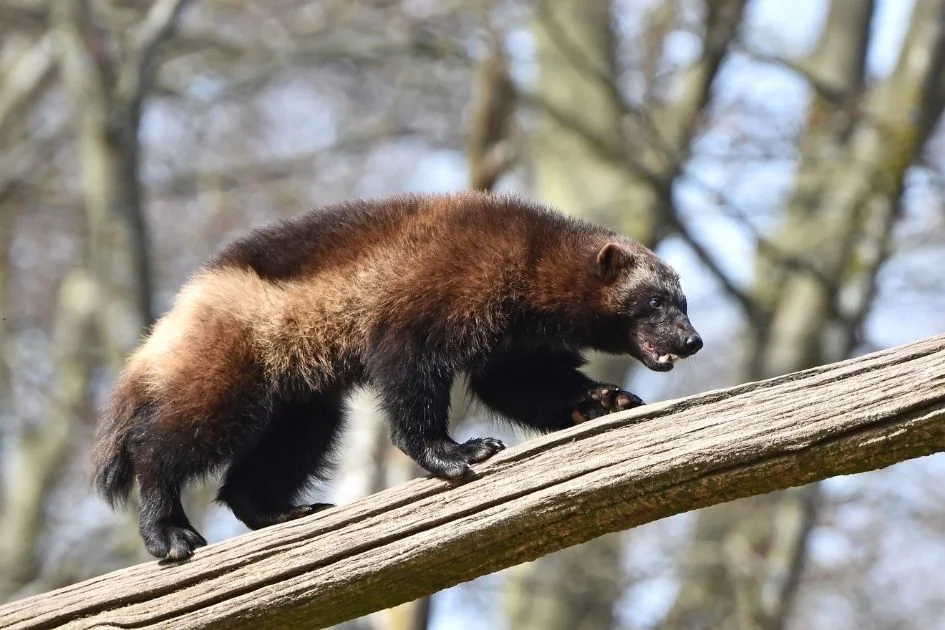
- Habitat: Grasslands, arctic tundra, boreal forests, alpine forests, open plains
- Classification: Mammal
- Diet: Omnivore
- Scientific name: Gulo gulo
A wolverine is a powerful carnivore that resembles a grizzly bear in terms of range and behavior. It is known for its aggressive behavior. Wolverines have proven over time that they can kill prey much bigger than themselves!
The western part of Montana is where wolverines are typically found. They have vast areas and low population concentrations (one study suggested males in Montana can range 160 square miles, while females, slightly less).
These animals prefer roadless wild habitats to clear-cuts or burned areas and primarily inhabit mountainous alpine terrain and montane-boreal woods. In the summer, they frequently live at higher altitudes, and in the winter, at lower altitudes.
Wolverines are frequently called “scavengers” because 99.9% of their diet consists of carrion. This powerful carnivore’s scientific name, Gulo gulo, which means Glutton in Latin, emphasizes its insatiable appetite.
Due to their territorial nature, wolverines attack when they feel threatened, especially when people enter their territory. Wolverines are formidable predators and nasty animals who won’t think twice about ripping apart humans if they get in their way.
Although there haven’t been any reports of wolverines attacking or hurting people, it’s still best to stay away from these dangerous animals.
9. Moose
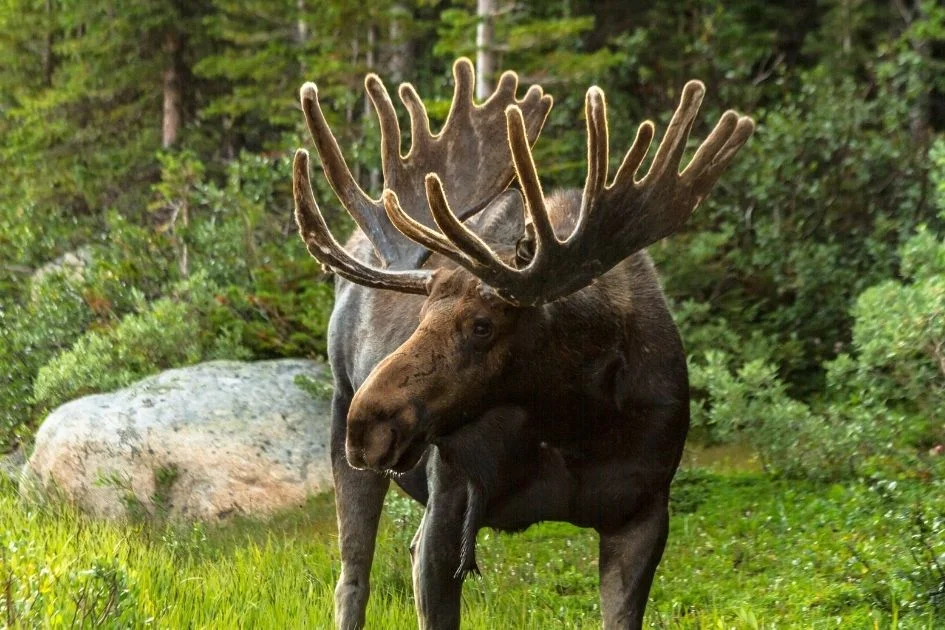
- Habitat: Forest areas, wetlands, swamps, streams, ponds
- Classification: Mammal
- Diet: Herbivore
- Scientific name: Alces alces
The Cabinet Mountains in the northwest and the Centennial and Big Hole valleys in the southwest are examples of dense mesic forests with regenerating regions where moose can be found.
Moose also inhabit a variety of other wooded landscapes throughout western Montana.
The average moose is a lone creature that only becomes violent when provoked. They will attack more people than bears and wolves because they do not fear humans.
Even though moose are extremely dangerous, it is against the law in Montana to kill one with antlers that total at least 30 inches in spread since this animal is regarded as a “Trophy” and cannot be hunted or killed.6
10. Ostrich
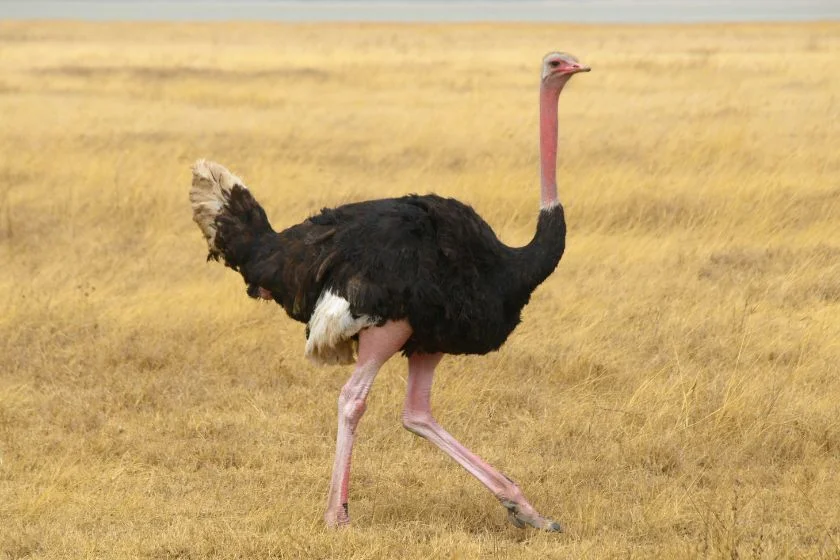
- Habitat: Savanna regions, desert plains, open grasslands
- Classification: Aves (birds)
- Diet: Omnivore
- Scientific name: Struthio camelus
Large, flightless birds called ostriches can be found all around Montana. They have a lot of distinctive characteristics, such as their capacity to run at 70 km/h (43.5 mph), making them the fastest land birds, and their height, which can occasionally reach 9.4 feet. The largest eggs are laid by no other living terrestrial mammal.
Ostriches are dangerous and aggressive, especially if their territory, eggs, or young are in danger or being assaulted. They have strong, long legs that are naked, and each of their muscular feet has two defensively useful claws.7
They can kick hard enough to gravely harm or even kill their attackers, thanks to their huge leg muscles. Keep your distance from ostriches because one kick from one can kill or maim a human.
Other Deadly Animals In Montana
Other potentially dangerous animals in Montana include the following:
- Deers
- Wolves
- Mountain lion
- Cougar
- Rubber boa
- Black-footed ferret
- Ferruginous hawk
- Golden eagle
- Bald eagle
- Alligator
- American bullfrog, etc.
Montana Wildlife Safety Tips
When visiting Montana, it’s crucial to understand that the state is home to various wild creatures and that you are solely responsible for keeping yourself safe.
Here are some guidelines for being safe:
- Conduct thorough research on the area you’ll be visiting or staying in because knowing about the wildlife you might run into will help you stay informed about prevention strategies and show you how to react in an emergency. To safeguard our loved ones, pets, and homes, we must be knowledgeable of the animals there, their habitats and behaviors, and how to utilize deterrents, scare tactics, and exclusion techniques.
- Avoid going on a hike at dawn or dusk because this is when most animals are most active.
- When out in nature, periodically make noise to alert wildlife to your presence. Do not walk alone. You may bring a friend, stay on designated trails, or do anything else.
- While watching wildlife, keep a safe distance from it. Bears should be kept at least 100 yards away. All other animals, such as mountain goats, elk, deer, and bison, should be kept at least 25 yards away from humans.
- Never approach, touch, or feed an animal—even if it doesn’t seem threatened by your presence. Animals in the outdoors are unpredictable and wild. Do not approach.
- Do not run if you accidentally bump into any of the animals as it can result in a predatory chase response.
- Avoid these wild animals’ young because their mothers may be overly protective.
- “Leave no trace.” This rule needs to be correctly applied. For your protection, avoid attracting wildlife by disposing of your garbage correctly, and never feed animals.
- Be mindful of your environment/stay aware.
Related Questions
What animal kills the most humans in Montana?
Deers have also been discovered to cause more human fatalities, and these deaths are mainly caused by vehicles colliding with the deer. Humans continue to murder more people than any other animal in Montana because of unrestricted gun use.
Is there anything poisonous in Montana?
Montana is home to about ten snake species, but surprisingly, only one is venomous. In Montana, the Western rattlesnake is a deadly snake whose bite can be fatal to humans.
Are there scorpions in Montana?
Although scorpions are more frequently associated with the Southwest, one species does reside in Montana. There have been reported sightings of this scorpion north of Fort Peck Reservoir, but southeast Montana is where the Northern scorpion is most frequently found. Due to the mildness of this scorpion’s venom, people are not known to get stung by it, but they can still experience an allergic reaction.
Are wolves a problem in Montana?
More than a thousand wolves are reportedly present in Montana, and their presence is progressively posing an issue for the locals. To control the wolf population in the state, bills and laws have been passed, but many hunters object because they feel the measures are too severe.
Is Montana a safe place to live?
Despite having a great natural environment, a low cost of living, and a wide range of employment opportunities, Montana is not one of the safest states in America.
However, there are still some safe cities in Montana to live in despite the high death rate brought on by humans and other animals. These safe cities include Kalispell, Bozeman, Dillon, Miles City, Lewiston, Whitefish, etc. There are a lot of wild animals in Montana. Make sure to keep your distance.
Conclusion
Montana is home to a wide variety of wildlife species and while you’re there, use extreme caution because some of the wildlife is deadly.
On the plus side, if you’ve ever considered visiting Montana, you should—the state offers a variety of fun outdoor activities.
References & Notes
Facts Sources:
- Lyme Disease. CDC.
- What you need to know about ticks in Montana. MTN News, (2019).
- Gendernalik A., Weger-Lucarelli J., Et. al. American Aedes vexans Mosquitoes are Competent Vectors of Zika Virus. The American journal of tropical medicine and hygiene (2017).
- Rauf D. Snakebites are on the rise, and these states are the riskiest. CBS News (2016).
- Maretić Z. Latrodectism: variations in clinical manifestations provoked by Latrodectus species of spiders. Toxion, Vol 21, Issue 4, 1983.
- Associated Press. Man Who Illegally Shot Trophy Moose Loses Hunting Privileges. USA News, 2022.
- Abdominal trauma by ostrich. Annals of Medicine and Surgery (Lond), 2012.




